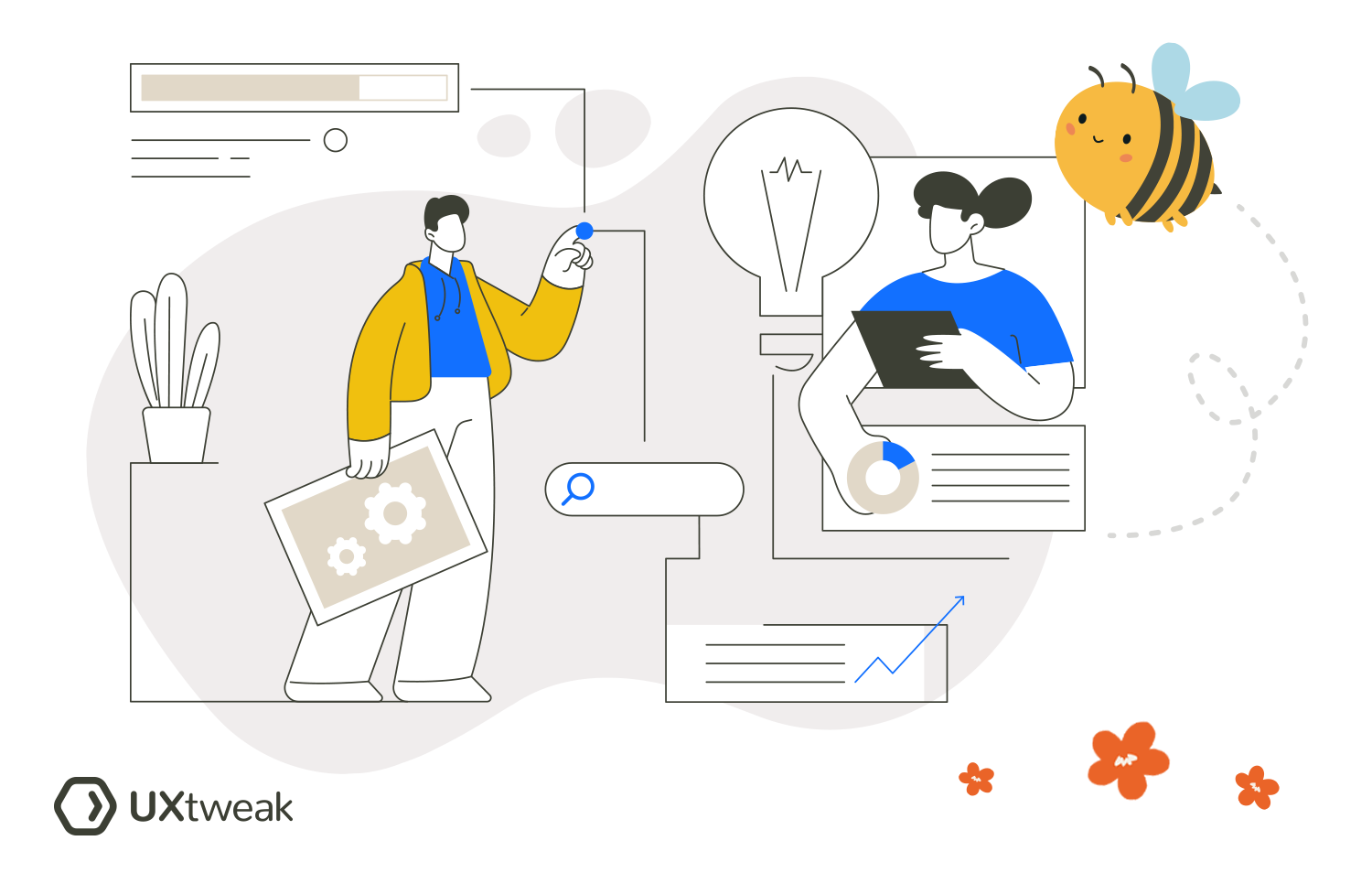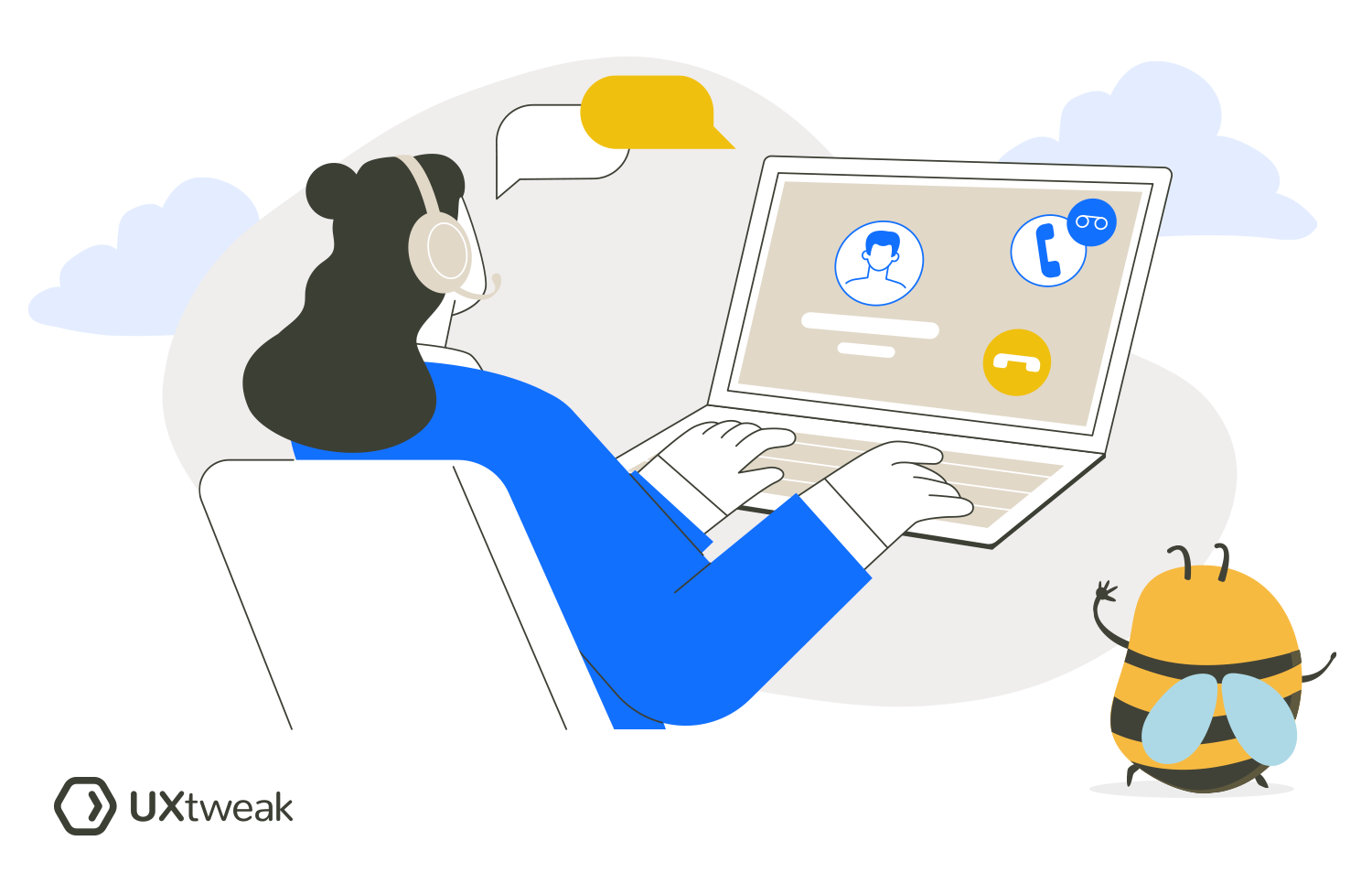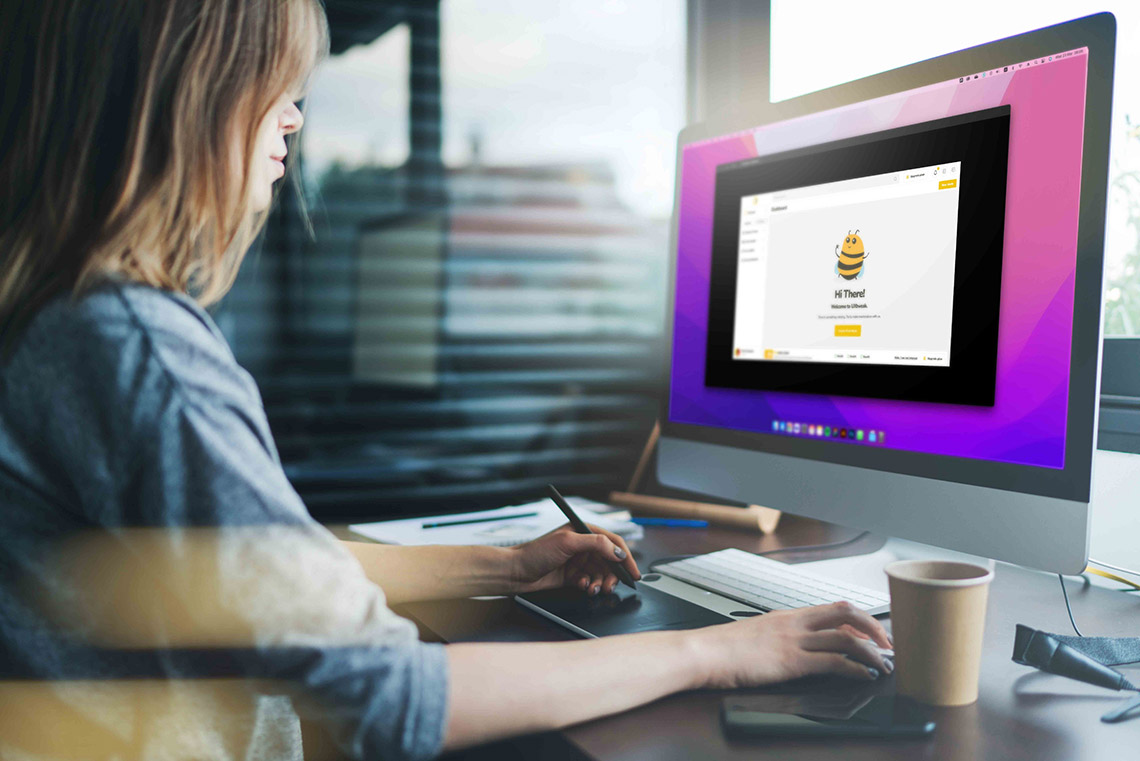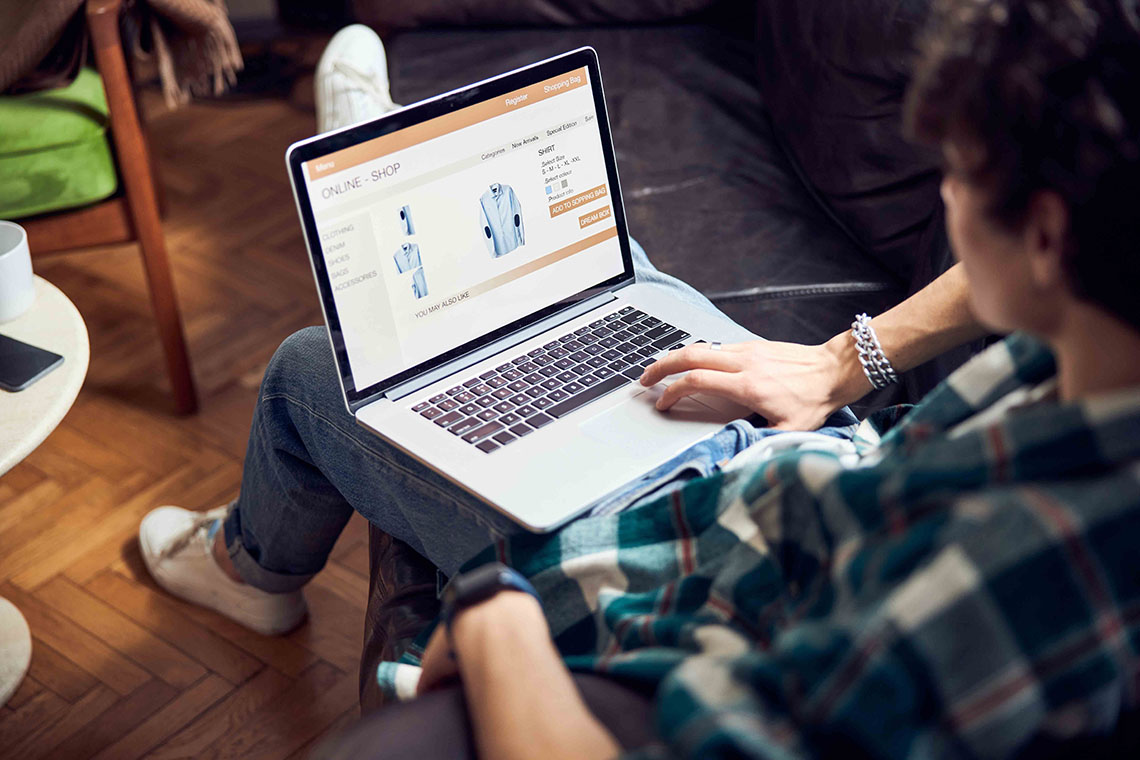You’ve likely come across terms like “qualitative interview” or “in-depth interview” in fields like market research or sociology. In UX, we refer to them simply as user interviews. These interviews are a vital part of the research toolkit, offering valuable insights into the users’ experiences, needs, and values.
In this guide, we will take a look at the core details of user interviews, how to conduct them, how to prepare the right questions, as well as how to analyze and apply the insights gained to maximize customer satisfaction with your future product.
Key Takeaways:
➡️ User interviews are crucial for gathering qualitative data and understanding user needs and behaviors, which inform design decisions.
❗️They can be structured, semi-structured or unstructured and are typically conducted during the discovery phase but can also be used throughout the product development process.
✅ User interviews differ from usability tests; the former focuses on attitudinal insights while the latter observes behavioral interactions with the product.
🧠 These interviews help in building empathy, uncovering unique user stories, and testing assumptions about user needs and product functionality.
💡 Combining user interviews with other research methods like usability testing and prototype testing enhances the depth and applicability of the insights gathered.
What are User Interviews?
User interviews are either scripted or unscripted conversations between researcher and user, to collect qualitative data and inform future design decisions in the product development process.
These interviews are often accompanied by questions inquiring about the user itself, their problems, feelings, values, and issues with your product. Either in-person or online, user interviews are most often conducted during the discovery phase.
However, they can be also used as a tool for gathering user feedback on an existing product, during design iterations, or any time you need to validate an assumption or test your hypotheses with users.
The key points of any user interview are:
- They can be structured, semi-structured or unstructured
- The focus is on qualitative data
- They provide key attitudinal and behavioral insights
Types of User Interviews

Generative interview
The most common type of user interview is the generative interview. As a rule of thumb, these interviews try to answer questions regarding an area in which you might be lacking information.
At this stage, the scope might be broad, but don’t lose sight of your goal. Even if the scope is broad, define what you are trying to find, and be flexible and attentive in order to not miss any crucial insights about your users.
Those are the types of interviews that are mostly used in the discovery phase, as a part of the user research process.
Contextual interview
The other type of interview is the contextual interview. Contextual interviews are semi-structured interviews meaning the participants answer questions while they complete tasks.
Furthermore, this interview takes place in the natural environment of your participant, e.g. workplace, home office, maybe even a favorite coffee shop.
This type is perfect for usability testing and concept testing.
Continuous interview
One special type of interview is the continuous interview. This type of interview occurs on a regular basis, most people opt for a weekly or bi-weekly schedule.
This interview can be either generative or contextual, the most important element is its repetitiveness. It enables teams to monitor their users’ feelings and attitudes as they develop and evolve. One user might have enjoyed one element as an idea, but once given shape and form, they might dislike it in practice.
This type of interview is an integral part of the continuous product discovery process.
When it comes to user interview types, there’s quite a few, depending on their structure, format and frequency. If you want to learn more about the 10 different user interview types and understand when to use which, check out our handy Types of User Interviews breakdown.
User Interviews VS Usability Tests
User interviews sound a bit too similar to usability tests and can be even sometimes used interchangeably. However, those vary significantly, in their methodology and approach. Let’s break down the main differences.
While user interviews are usually a 1:1 conversation with the user that aims to discover their needs, pain-points and expectations, usability testing is a test of their interaction with your product, that aims to pinpoint usability issues and and learn more about their usage patterns.
Learn more about usability tests in this quick video:
The differences can be divided into a few generalized categories, the first being purpose.
Purpose
The difference in purpose is that for the user interviews, we are trying to generate new knowledge. We are looking for users’ hidden needs and expectations, their preferences. Furthermore, we can look for potential pain points or issues, to understand how we can create an optimal solution for those.
Opposed to that, during the usability test, we are evaluating an already existing design. It can be either a wireframe, prototype or even a live website. Usability testing seeks to uncover how users interact with it, how it’s performing, and whether there are some issues we have to fix in order to improve the user experience.
Research type
These two methods also differ in the way they are categorized according to a research type. In the case of user interviews, we are talking about the attitudinal type. We’re gathering their verbal expressions, emotions, and self-reported behaviors, essentially exploring their internal perspectives.
Opposed to that, the usability test is categorized as a behavioral type. During a usability test, we are following the users’ behavior with their product, looking for confusion points and areas of improvement.
Timing
Closely tied to the purpose, we have another category and that has to do with timing. When should you opt for what technique? If you are in the preliminary stages of the design creation, it makes sense to conduct user interviews rather than usability tests.
At this stage, you don’t really know what the users want yet, and thus have to learn that through research.
Usability tests come later, once the design is up and running, or when you at least have a prototype. Those are also often used during alpha or beta testing.
To summarise, both of these techniques have their place in the different stages of the design process, and working in tandem provides your research with actionable insights you can expand upon, taking your design to the next level.
Why Should You Conduct User Interviews?

Now that we understand what user interviews are and how they differ from usability tests, let’s answer the most fundamental question. Why conduct them? In the following section, we will go over some of the biggest benefits user interviews bring.
Compelling User Stories
Your users are the experts in their own experiences. Conduct an unstructured interview, and see it yourself – you’ll be surprised by the insights your users share. They could open up about their life circumstances that have shaped their perspective on the problem your product aims to solve.
Essentially, they’re sharing their personal stories – stories that you can use to enhance and refine your product. This authentic storytelling also feeds into the next point on our list.
In-Depth Empathy Building
Conducting user interviews leads to you better understanding users’ issues, even those you might not been aware of. Your users, just like everyone else, are unique individuals with different skills, life experiences, and issues.
By talking to them and learning about their unique needs, you develop a deeper understanding and empathy, which can improve your product and make it more inclusive.
Uncovering Unexpected Insights
During an honest conversation, that interviews seem to facilitate, you might find an unexpected nugget of rich insight. Since the interviews are mostly done in a one-on-one setting, you might pick up on things you didn’t even know you were looking for.
During such interviews, researchers often uncover the insights that change the whole trajectory of the product for the better or add a new unique feature that other tools like yours were lacking so much.
Testing your Assumptions and Clarifying Contradictions
User interviews are often used in combination with other research methods to get a holistic perspective on the information you gather about your users. They allow us to ask follow-up questions, uncover more information, and gain a deeper understanding of where the user feedback originates from.
User Interviews and Other UX Research Methods

As we already mentioned above, user interviews pair well with other research methods. In this section, we will go one by one through some of the most popular ones and show how incorporating user interviews might elevate your research to new heights.
User Interviews and Usability Testing
We have explored the difference between the two methods, now let’s take a look at how they work together, and how one enhances the other.
Usability testing and user interviews complement each other by offering distinct yet synergistic insights into the user experience. While usability testing helps you collect quantitative data about the users, user interviews allow to enrich it with some qualitative insights.
Together, user interviews provide context and depth to understand the “why” behind user behavior, while usability testing validates findings and identifies concrete areas for improvement, resulting in a comprehensive understanding of user needs and preferences. Later, those will help to inform your product design and development decisions.
User Interviews and Prototype Testing
Similarly to usability testing, prototype testing is a great companion for user interviews. They work seamlessly together, providing you with a perfect blend of quantitative and qualitative insights. Prototype testing is perfect when you need to gain a deeper understanding of how users interact with your product and where they click.
It’s a great approach for rapid testing sessions, or just anytime you want to evaluate the prototype’s usability before handing it into development. The only difference here is that prototype testing is conducted on the design concepts in Figma, or InVision, for example, while usability testing usually evaluates an already existing website or its pre-release iteration.
It is important to any design project to understand how our participants felt about functions, what they might change, or how they perceived the usefulness of your design. Using the interview after the testing might provide you with more insight into the data you have gathered during the observational phase.
User Interviews and Card Sorting
Another way how user interviews can help you enrich quantitative studies with qualitative data is by pairing them with card sorting.
While card sorting helps to understand users’ mental models, how they perceive information, and how they expect it to be grouped, user interviews provide context and delve into the reasoning behind participants’ sorting decisions, shedding light on their thought processes and preferences.
User interviews play a crucial role here, adding a qualitative layer that really adds to the quantitative data you get from card sorting studies. This combo gives a deeper understanding of what users really need and how they behave.
User Interviews and Diary Studies
Used in longer diary studies, it is often beneficial to have an initial interview before the start of your studies.
This interview might help to prepare your participants for the study, help you to understand your target audience better, and in some cases steer your study in a new and exciting direction.
Equally valuable is a wrap-up interview after the logging session is done, so you might probe a little bit more about the diary entries, clear up any confusion on your part, and explain any contradictions that might have arisen in the diary entries.
Try these and other research methods and see how they can complement user interviews in UXtweak demos ⬇️
User Interviews Best Practices
- Focus on your research goal: Prepare for the study accordingly. Make sure your questions are designed to clarify all the confusion you might still have and test your assumptions. Focus on open-ended questions on which you can build up and use follow-up questions for any points of confusion or contradictions. If you want to lean more about about asking the right user interview questions, check out our video guide. ⬇️
- Create the right environment: Be friendly and make your participants feel welcome. Start with small talk and create a comfortable environment to encourage open communication and build trust.
- Practice active listening: Listen attentively to participants’ responses, asking follow-up questions to delve deeper into interesting points or clarify ambiguous statements.
- Write everything down: You need to keep record of the interview so you can come back to it later, and use it in any other stage of development, to read through and better understand your users. Make a recording of each session and take notes for easier analysis. ⬇️
- Respect participant time: Be mindful of participants’ time constraints and schedule interviews accordingly. Stick to the allotted time frame and avoid overrunning.
- Invest in a good user interview tool: For effective user interviews, make sure you use a tool that supports all necessary functionalities, such as note-taking, automatic interview recording, etc.
💡 If you are unsure how to choose a tool for moderated research and user interviews, check out our video guide:
Wrapping Up
User interviews are a versatile tool you can use to enhance any part of your design process. They provide you with deeper understanding of your users’ mind, help with building empathy within your team, and they pair well with different research techniques.
Mastering them will elevate your inclusivity and design to the next level, making your product a better fit for the users’ needs.





